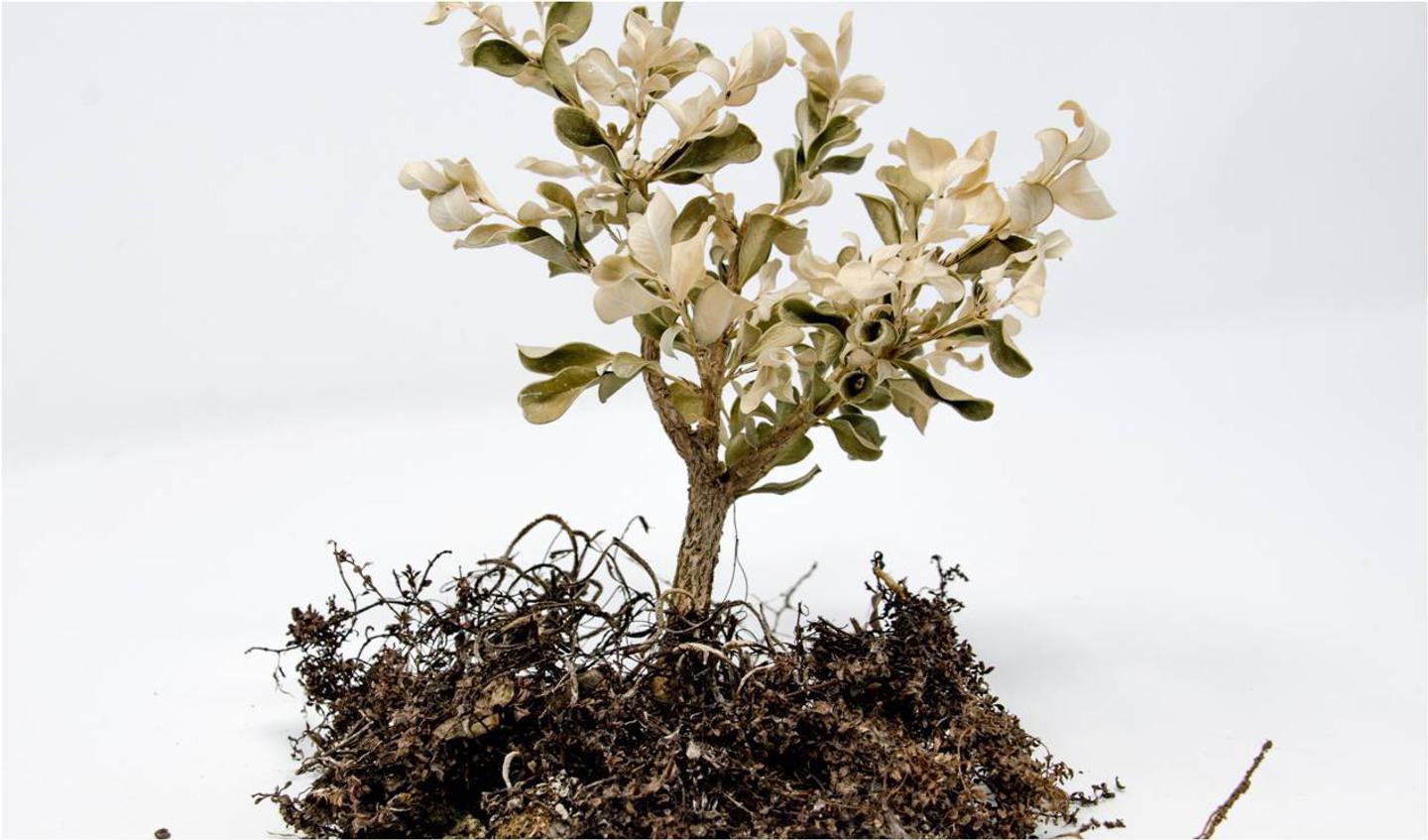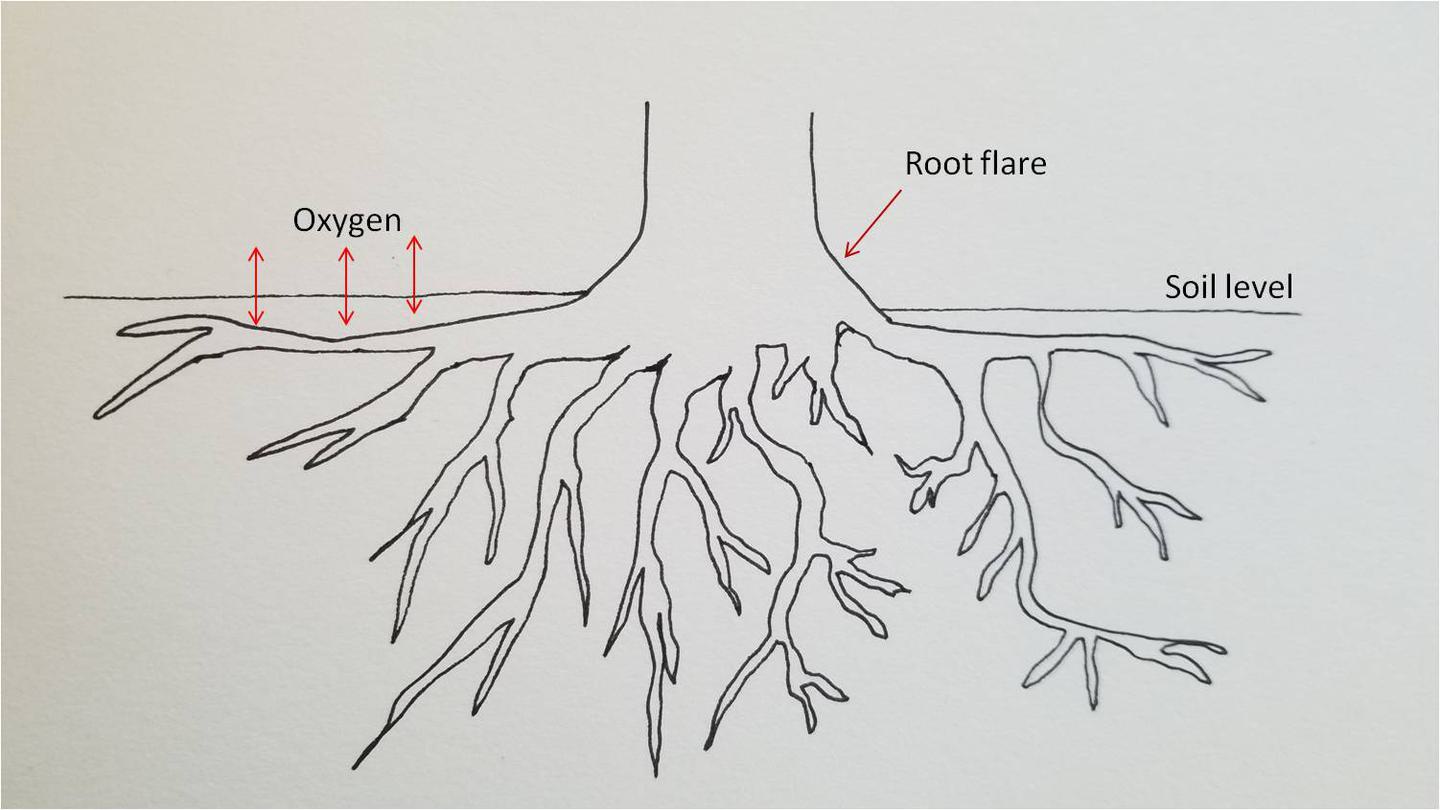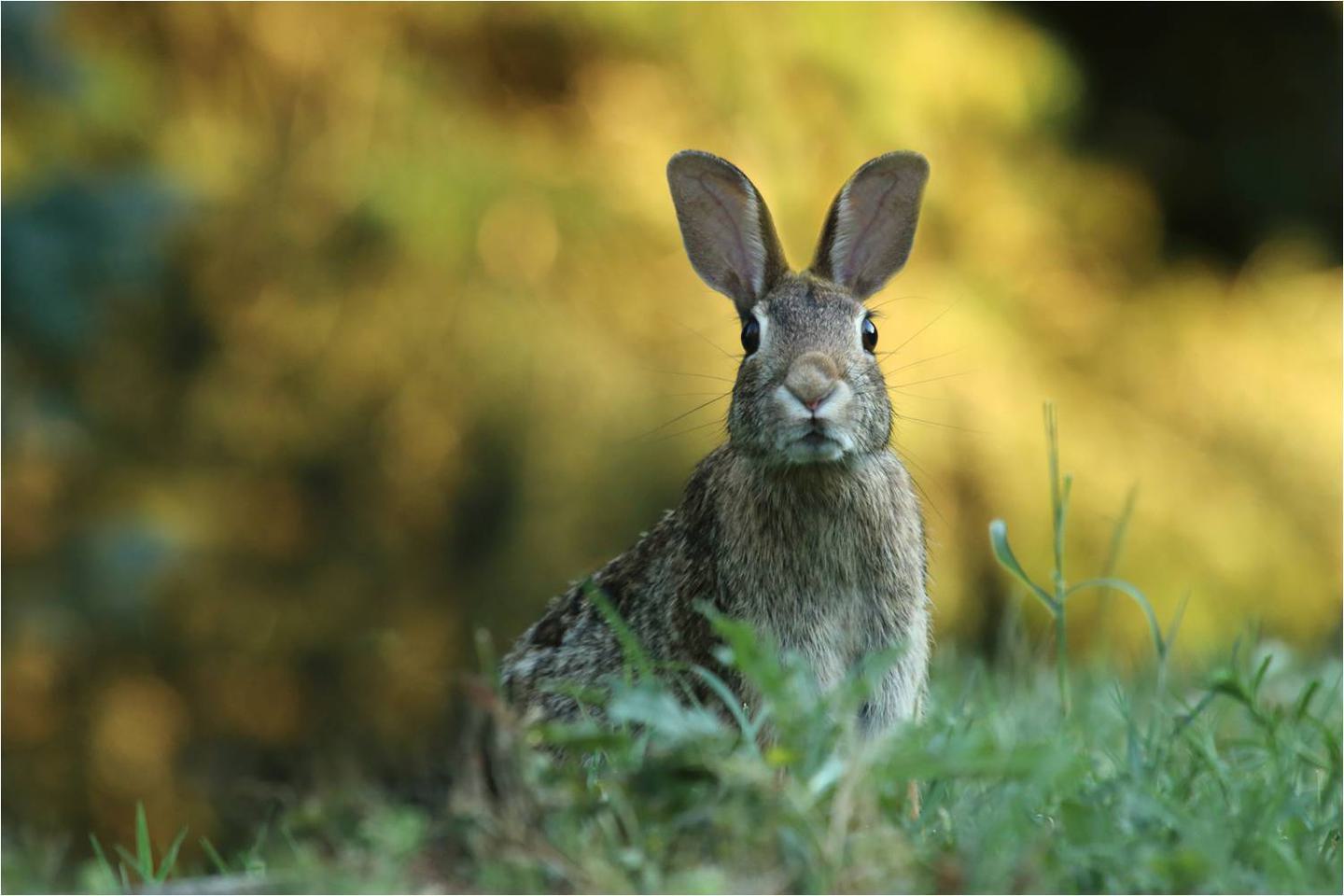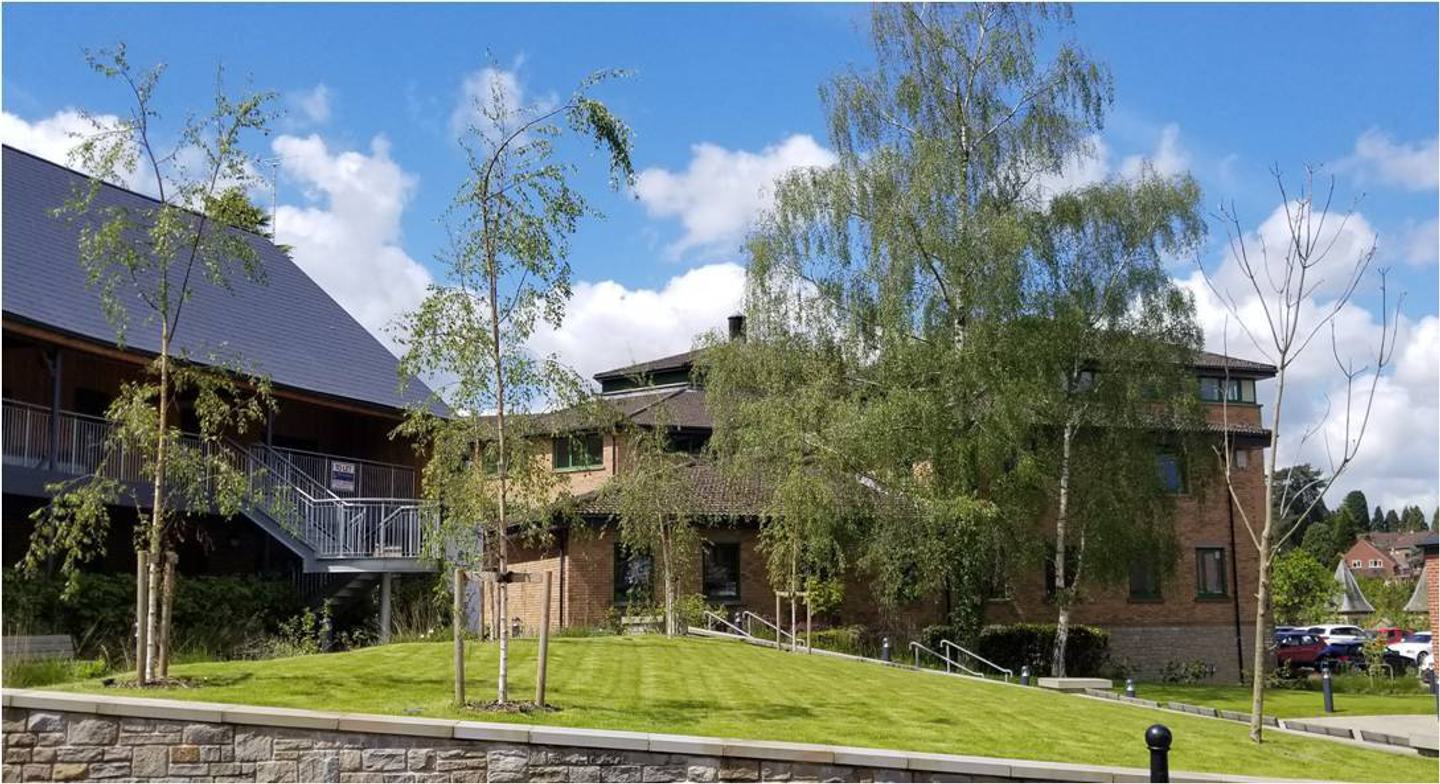Guides
Top 7 reasons trees fail after planting
Now and again, we hear that a tree hasn't done well after leaving the nursery. Invariably, it's down to one of the reasons outlined below. The best remedy is prevention, so arm yourself with a bit of tree planting knowledge and you should be on the way to success.

1. Too little water
We all know that plants need water to survive, but did you know a newly planted tree can need tens of litres per day? The most common reason for a newly planted tree to fail in the first growing season is drying out. In a hot summer, it doesn't take long for a freshly installed tree to use up all the water in its planting hole and then start showing signs of dehydration (dull leaves, wilting, failure to thrive). Severe symptoms will be crisp brown leaves and brittle stems.
Water smaller trees about 10 litres (a bucketful) two or three times a week in the growing season after planting and more in hot weather. Use mulch to reduce evaporation and suppress weeds.
See: Watering trees & shrubs and Aftercare guide

2. Too much water
Too much of a good thing can also be bad! Bar flood-tolerant willows, alders and a few other species, if tree roots sit in water that doesn't drain away, this spells disaster as roots can suffocate.
Remember that roots need tiny pockets of air in the soil to breathe. A nicely aerated texture is created by worms and other critters living in the soil. Incorporating organic matter in the planting hole draws these helpful chaps in, as well as feeding the soil.
As for watering, about 10 litres (a bucketful) three times a week will do for a newly planted 15 litre tree in the growing season, depending on the weather. Check the soil is getting wet, but not so sodden the water is pooling on the surface for longer than a minute or so. Signs of overwatering include yellowing and dropping leaves, and lack of lustre.
See: Watering trees & shrubs

3. Planting too deep
The bottom part of a tree trunk likes to live above ground. On most species, it's not adapted to the damp surrounds of soil. This goes especially for young trees, which haven't developed a thick protective bark.
The chief problem is that the stem can start to rot, in severe cases damaging the cambium layer that is responsible for transporting water and nutrients up from the roots. Symptoms may take more than a year to show and will manifest as failure to thrive and susceptibility to pests and disease. Epicormic growth (shoots from low down on the stem) can also be a sign of such stress.
Carefully dig down around a tree you suspect is planted too deep to check the location of the root flare (where the tree's 'ankle' turns into a 'foot'/'feet'). This spot should be no more than an inch down (a couple of centimetres under the soil). If you need to, remedy the situation by scraping away soil around the base of the tree, leaving a gentle slope outwards.
See: Planting guide and Planting too deep - why it harms trees

4. No weed control
A weed is just a plant growing in the wrong place. Well, moisture-sapping grass and any other hungry plants are in the wrong place if they're close to a newly planted tree!
Moving into a new home can be a bit of a shock for a tree, and it needs plenty of water to get it through the early days. It hasn't put down large root system yet and needs nurturing to help it grow this system. If grass or weeds are allowed to grow over the precious root zone, they'll steal water from above before it gets to the tree roots, and the tree will be thirsty. Of course it will try to send out roots to gather water from deeper in the soil, but it might dry out before this is possible.
Get your tree off to the best start by completely removing grass and weeds in a 1-metre diameter area around the planting position. Apply weed control such as weed barrier fabric and/or mulch (e.g. bark chippings) or be prepared to maintain this weed-free area over the course of the first two years after planting.
See: The importance of grass and weed control

5. Animal damage
What a delight it is to see a spring bunny hopping into a hedge and to catch a fleeting glimpse of a young doe browsing in a woodland... Unless they are in the vicinity of your newly planted trees!
Unfortunately, animals including deer, rabbits and squirrels aren't very compatible with tree establishment. Rabbits and other small rodents gnaw around the base of trees – especially tasty apple trees and other rose family species – cutting through their vital 'arteries'. Squirrels like to strip bark. Deer find the tips of trees rather tasty and also have a habit of rubbing antlers on trunks to mark territory. Livestock including sheep can also nibble and dislodge freshly planted specimens.
Keeping animals well away from your trees is the best policy (e.g. with fences), followed by applying protection in the form of rabbit guards (spiral tubes or netting), deer guards (Tubex) or sturdy constructed barriers.
See: When to use rabbit and deer guards

6. Human damage
Hungry animals are not the only threat to new trees that walks around on legs. Strimmer-wielding gardeners and those of the more mindless persuasion can also wreak havoc.
Beware strimming near trees. In fact, don't do it! If that whizzing wire strikes the base of the tree, it will cut through the trees vital arteries. If the damage goes all around the circumference, this is a sure-fire way to kill your tree (called ring-barking) by cutting off the supply chain from the roots.
Meanwhile, trees planted in urban areas can be subject to intended or unintended damage, e.g. through vandalism or accidental abuse. Consider installing metal tree guards.

7. Poor staking
Getting well-anchored and standing firm in the wind isn't something that happens overnight for transplanted trees. A little like a toddler learning to walk, new trees need a little hand-holding. Unlike toddlers, though, they can't get themselves up if they do fall over.
Stakes are a necessary piece of planting kit to help new trees stay in place while they grow those essential roots. And it needs to be done correctly. Make sure stakes are embedded vertically, about a third of their length into the soil. The tree then needs to be attached to the stakes or rail with a rubber tie and a rubber spacer (or other soft material) needs to sit between the tree and stake/cross rail. If the tree rubs on wood or metal, it will suffer abrasion.
See: Staking and what happens when you don't get it right.
Here to help!
It might sound like there's a lot that can go wrong, but if you use this guide like a checklist, there's a lot that can go right! And at Chew Valley Trees we are always happy to offer support on tree planting and maintenance, so if there's anything you can't find the answer to in our guides, or you just need a little more info, please get in touch.